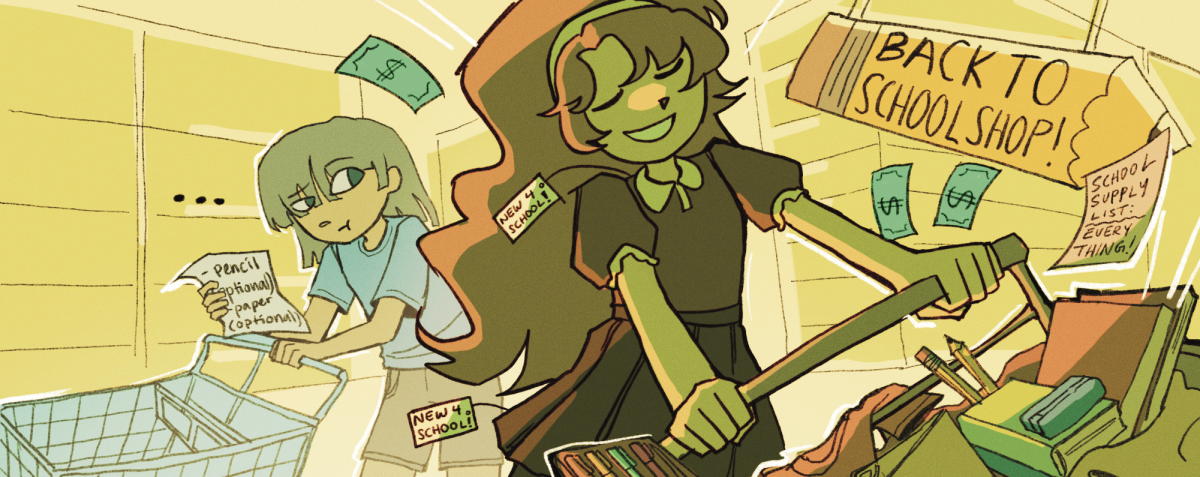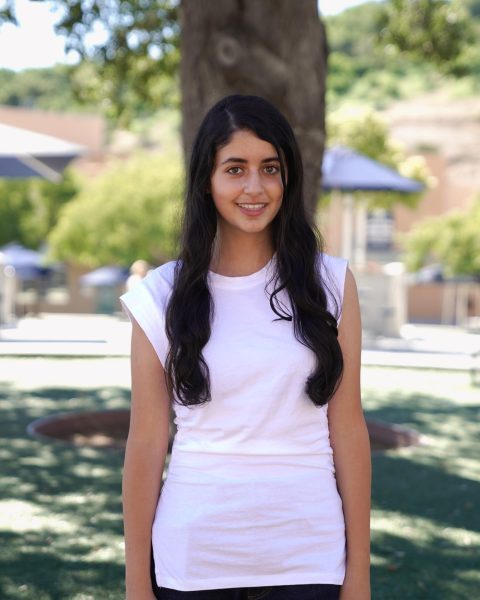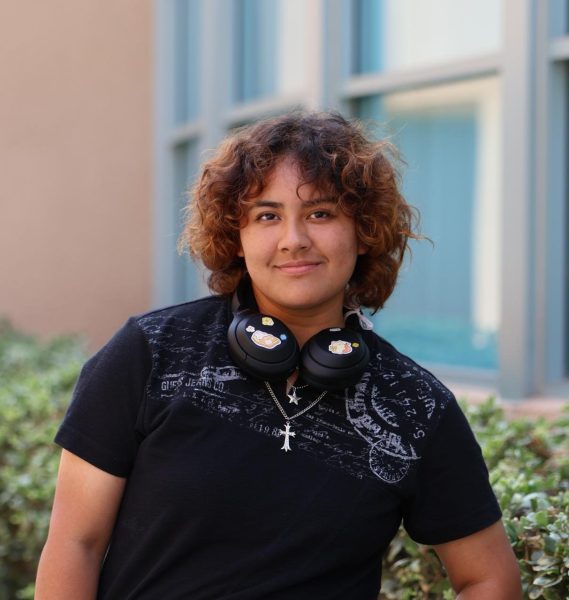Aisles of brightly colored notebooks, fully intact JanSport backpacks and the coveted 64-pack Crayola Crayons mark the beginning of an annual tradition… back-to-school shopping.
These eye-catching items lead many students down a familiar path: buying a shopping cart’s worth of school materials only to let it collect dust throughout the school year. However, what students often fail to realize is how wasteful this practice can be. Back-to-school shoppers should focus on purchasing essential school supplies, not all the pretty things.
Every year, retailers bombard families with advertisements that equate academic success or social acceptance with the purchase of the latest products, causing parents and students to buy back-to-school items that aren’t necessary for school. In 2023, American households spent roughly $890 in back-to-school shopping expenses, according to consumer behavior reseacher David Tighe.
These excessive back-to-school costs are often a result of purchasing highly marketed name-brand materials that are more expensive than generic or store-brand alternatives. Take Target’s store-brand mechanical pencils that cost $5.99 for 50 compared to its name-brand counterpart, Paper Mate, that cost $19.69 for 10 or Target’s store-brand scissors for $3.79 compared to name-brand scissors, Scotch, for $6.99.
This emphasis on name brands over the actual necessity of feeds into back-to-school consumerism, leading families to prioritize purchasing branded products rather than focusing on essentials supplies.
Students might think overspending is a trivial issue, but school supplies’ unique packaging and disposal significantly impact the environment. School supplies are often made up of synthetic plastics that are derived from natural gas, coal or crude oil, which are known to contribute significantly to greenhouse gas emissions, according to the U.S. Energy Information Administration.
This isn’t to say that students shouldn’t buy new school materials when it is needed.
First, recognize that you don’t need to buy all the school supplies you see in stores to be successful. At Northwood, teachers are not allowed to have the required school supplies list unless they have language on their syllabus about how to get them for free, so communicate with your teachers about what supplies are needed for class instead.
If you find yourself wanting extra school supplies, that’s perfectly fine, but remember to be mindful of how much you are spending. Be on the lookout for eco-friendly alternatives, like Onyx and Green, who have colored pencils made from recycled newspaper, math sets made from bamboo and plant-based glue. And when you can, reuse your old supplies.
If you’ve already bought your items and realize you might not need them all, you can give them away to teachers who benefit from having the materials in class or even donate them to Orange County United Way, which will give them to students in need across Orange County.
Once we recognize our part in overconsumption, we can begin revamping back-to-school shopping with a greater emphasis on why it exists in the first place: school.





















































